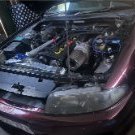Home Tuning Vipec And Link G4 Skyline Plug In Ecus Thread .
Announcements
-
Similar Content
-
Latest Posts
-
Because all parts that are put into your papers usually are assigned a badging if they did not come with one. So other people can just check that badging to tell if it is the parts your papes outline. But my pipe has NOTHING on it whatsoever. No idea why this even passed as a Mines pipe to begin with. I see this going two ways: -nobody cares and it's a non-issue, but that is unlikely -the pipe will just have to be assigned a bagding, for sake of argument, a Mines logo, and the papers corrected accordingly If it interests you I will post what the actual solution ended up being. All I care about is that it has to sound equal length and nobody can screw me later on because of a pipe being illegal.
-
The fasteners to the pipe are not subject to TÜV I guess, if we really start putting nuts and bolts through technical tests I'm going to hang the people responsible and then myself. Usually on a modern-ish EU normed car, you would just replace the pipe. Because if you start hacking away at it and welding new pieces on the cops will definitely find a reason to tow your car. That is just how it is sadly. On old cars and imports with no clear "standard" stuff like that won't matter too much. Most cops or inspectors probably won't even really know what they are looking at. But there is experts for this stuff even among cops, and some of them know the rules to a T and even have extensive knowledge about many vehicles. For "just a pipe" to be legal it usually is included in a set of parts, like a complete intake kit or a full exhaust. For example my exhaust needs to pass a noise test, meaning they have a standardized test track with a set of instructions and they run the car through there 3x for an average noise value that is 75dB(a) at point x of the test track. If it's above that, fail. For a turbo setup to be put in your papers you have to do dyno runs, emissions testing etc. So quite costly
-
By Murray_Calavera · Posted
Would this not be the same for the exhaust you've posted up? If your exhaust volume and emissions are fine, why does the brand of pipe matter? -
The issue is more the fact that there is inspectors that deal with japanese cars a lot and they might know what a real Mines pipe looks like. And then they're gonna get antsy and not pass your car. But I'd have to talk to one of them about this, because you know as well as me that it's just a damn pipe and it effectively doesn't do anything. As I need to have my GT2860s and my exhaust setup (and the increase in HP) TÜV'd anyways maybe they can just correct the entry in the papers or assign a badge to the front pipe. I'm no expert either though, will inquire about this. Thanks for the insight. Not sure if having a custom made pipe is good or not. Will find out in due time I suppose. Would be kind of funny if this was made in Germany though.
-
See this is a really tricky topic as technically the same rules apply to all cars but for cars but there is a difference. If you want to modify a car like the Skyline which never existed here you have a bit more freedom as they do not adhere to EU specs anyway. Any modification you do has to be in dividually checked anyway so as long as one of the inspectors think it's ok and within the TÜV ruleset you can get stuff like a top secret rear diffuser put in your papers. Which frankly would need a shitload of tests and certificates for EU spec cars, like a 2010 BMW M3 for example. But if you DO run these tests and all tests come out ok (safety stuff for the most part) there is no problem running such a part legally. It's just way too expensive to do for a single person on one car. The most touchy parts are emissions related mods, like an exhaust, turbos, air intakes. If it makes noise or alters the carbon emissions it's essentially illegal until you prove it's not. Meaning it doesn't exceed noise limits or have worse carbon emissions. I'd say for hoses if you replace them same same it doesn't matter what material they are or what brand you use. Same for nuts and bolts usually, they won't go and specifically check that your water hoses and some bolts are 100% OEM parts, that is nonsense.
-





Recommended Posts
Create an account or sign in to comment
You need to be a member in order to leave a comment
Create an account
Sign up for a new account in our community. It's easy!
Register a new accountSign in
Already have an account? Sign in here.
Sign In Now